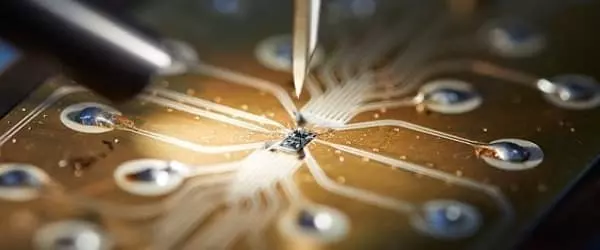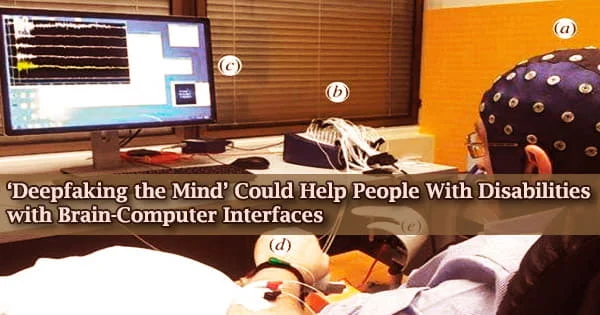Quantum computers are making a splash, and it’s a big one. Even in its early stages, the technology outperforms the competition and is expected to render the field of cryptography as we know it obsolete. Quantum computing has the potential to transform several industries, including finance and medicine.
Although research into superfast quantum computers has advanced, it is still not possible to connect the individual processors. To solve the problems, an international research team has demonstrated a method to scale quantum computers using nanophotonic silicon carbide structures.
The orchestration of multiple task-optimized smaller systems is a promising path toward larger quantum computers. Because of its compatibility with on-chip devices and long-distance propagation in quantum networks, photonic interference emerges as a powerful method for dynamically connecting and entangling any two systems.
We were able to demonstrate that the excellent spin-optical properties of our color centers are maintained after nanophotonic integration with our approach. We gained enough headroom to perform quantum gates on multiple nuclear spin qubits thanks to the robustness of our quantum devices.
Florian Kaiser
Due to their notorious sensitivity to the smallest disturbances in the close environment, one of the major barriers to the commercialization of quantum photonics remains the nanoscale fabrication and integration of scalable quantum systems. This has made developing systems that can be used for quantum computing while also providing an efficient optical interface an extraordinary challenge.
In an interview with CIO, Andrew Dzurak, Professor of Nanoelectronics at the University of New South Wales, stated that he hopes quantum computers will be able to advance scientific research by simulating what potential drugs would do in the human body. Dzurak, on the other hand, believes it will take 20 years for quantum computers to be useful enough for that type of application.
“I believe that within ten years, there will be demonstrations of modeling of certain chemicals and drugs that could not be done today,” Dzurak said in an interview. “However, I do not believe that there will be a convenient, routine [system] that [people] can use.” “Moving to that stage will take another decade beyond that.”

A recent study published in Nature Materials demonstrates how the integration barrier can be overcome. The research is the result of a multi-national collaboration involving researchers from the Universities of Stuttgart (Physics 3), California — Davis, Linköping, and Kyoto, as well as the Fraunhofer Institute in Erlangen, the Helmholtz Centre in Dresden, and the Leibniz-Institute in Leipzig.
The researchers took a two-pronged approach. For starters, their quantum system of choice is the silicon-vacancy center in silicon carbide, which is known to have particularly robust spin-optical properties. Second, they created nanophotonic waveguides around these color centers using gentle processing methods that leave the host material essentially untouched.
“We were able to demonstrate that the excellent spin-optical properties of our color centers are maintained after nanophotonic integration with our approach,” says Florian Kaiser, Assistant Professor at the University of Stuttgart and project supervisor. “We gained enough headroom to perform quantum gates on multiple nuclear spin qubits thanks to the robustness of our quantum devices. Because these spins have extremely long coherence times, they are ideal for implementing small quantum computers.”
“We investigated the unusual triangular shape of photonic devices in this project. While this geometry has commercial appeal because it allows for scalable production, little is known about its utility for high-performance quantum hardware. Our research shows that light emitted by the color center, which transports quantum information across the chip, can be efficiently propagated via a single optical mode. This is a critical conclusion for the viability of integrating color centers with other photonic devices, such as nanocavities, optical fiber, and single-photon detectors, required to realize full quantum networking and computing functionality “Marina Radulaski, Assistant Professor at the University of California, Davis, agrees.
The silicon carbide platform is particularly appealing due to its CMOS compatibility and widespread use as a high-power semiconductor in electric vehicles. The researchers now want to take advantage of these features in order to scale up the production of spin-photonics chips. They also intend to build semiconductor circuitry to electrically initialize and read out the quantum states of their spin qubits. Maximizing electrical control over traditional optical control via lasers is a critical step toward system simplification.
“By combining efficient nanophotonics with electrical control, we will be able to reliably integrate more quantum systems on a single chip, resulting in significant performance gains,” says Florian Kaiser. “In this sense, we are only at the beginning of quantum technologies with silicon carbide color centers.” “Not only is our successful nanophotonic integration an exciting enabler for distributed quantum computing, but it can also improve the performance of compact quantum sensors.”
















